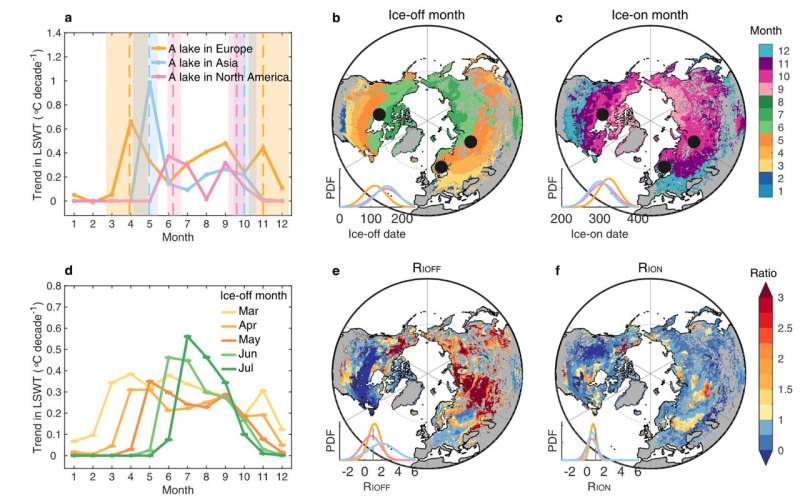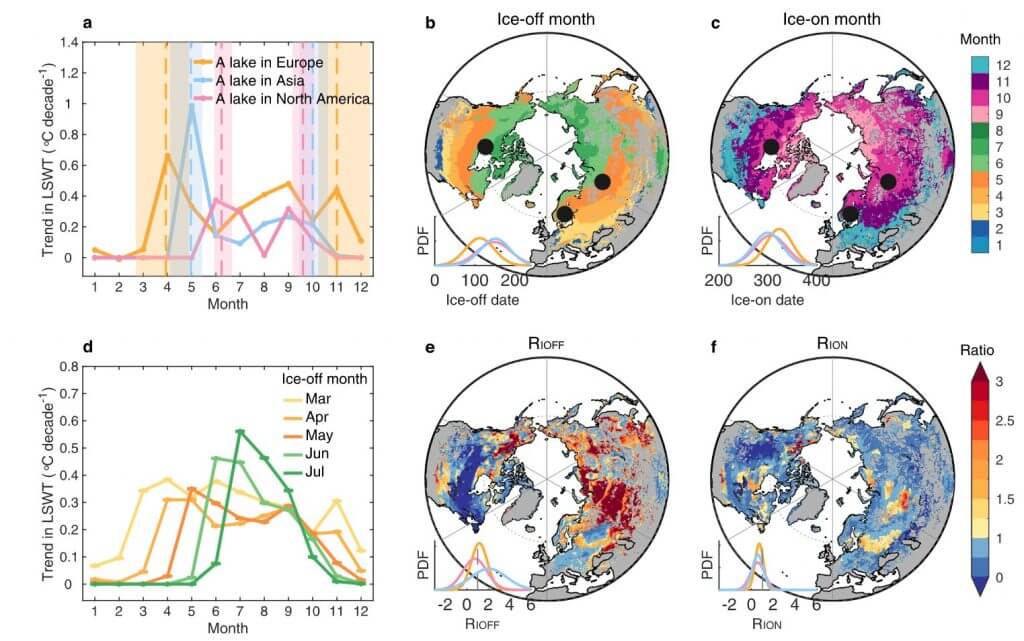
More than half the world’s 117 million lakes experience ice cover for part of the year. But with the rise in global temperatures, the timing of seasonal ice formation and loss are changing at rapid rates. Since 1979, the average timing of lake ice break-up across the Northern Hemisphere has advanced by 8 days. This 8-day advancement has resulted in excess lake warming with numerous implications for lake ecosystems.
A new paper published in Nature Communications by Dr. Iestyn Woolway of Bangor University and colleagues at Peking University has concentrated on Northern Hemisphere lakes, using satellite images to study nearly a thousand lakes and modeling over 100,000 to calculate the effects of the increased ice-free days on the water temperature.
They also suggest how changing temperature profiles within lakes might affect the processes within the lakes as well as the plants and animals living within the lake environments.
“Projecting future lake warming due to changes in ice cover is important for understanding how these changes could affect ecological processes within lakes, and how that will affect all the ways we, and other animals and plants use lakes in the future,” explained Dr. Iestyn Woolway of the University’s School of Ocean Sciences.
“Higher lake surface-temperatures due to shorter periods of ice cover can impact processes within the lakes, leading to effects such as increasing or earlier plankton blooms, and increase in cyanobacteria and an increase in layering of different water temperatures. Water stratification could lead to lake deoxygenation [low oxygen concentrations] at depth, and loss of habitat for oxygen-sensitive fish,” he added.
Iestyn and his fellow researchers estimate that lakes will be ice-free around a month earlier (15–45 days in the Northern Hemisphere), which may lead to an increase of between 2 and 6 degrees additional surface temperature (during the ice-off month, the time of year in which dormant species begin to thrive once again) this century. They have also estimated that each newly ice-free day adds an average increase in surface lake-temperature between 1.1–0.9°C.
Explore further
Lake heatwaves may become hotter and longer, new study suggests
Xinyu Li et al, Earlier ice loss accelerates lake warming in the Northern Hemisphere, Nature Communications (2022). DOI: 10.1038/s41467-022-32830-y
World’s lakes experience excess warming (2022, September 12)
retrieved 13 September 2022
from https://phys.org/news/2022-09-world-lakes-excess.html
part may be reproduced without the written permission. The content is provided for information purposes only.

